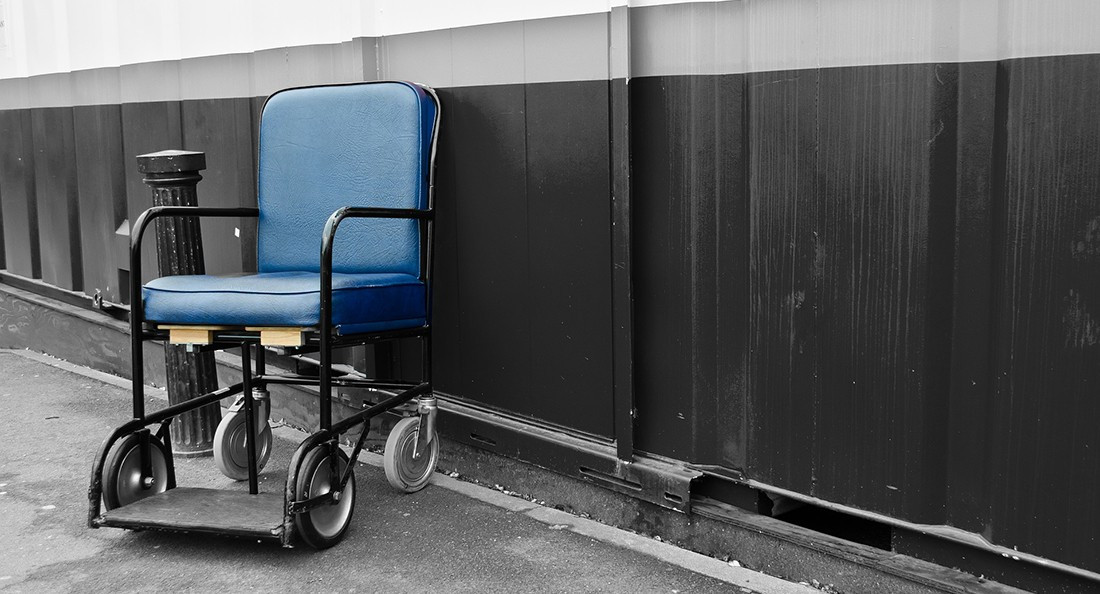Selective accessibility
Proposed building code exempt from accessibility standards
The Provincial Accessibility Advisory Council is in ongoing consultations to develop a Design of Public Spaces Disability Standard. In theory, this standard could require a huge proportion of public space to become more accessible.
But as it currently stands, the proposed standard makes a big assumption: that the current Manitoba Building Code does not fall under the jurisdiction of provincial accessibility legislation and is already adequately accessible. This would mean any issues with the code or the spaces it covers would have to be addressed through a separate process.
David Kron of the Cerebral Palsy Association of Manitoba, Children's Coalition and spokesperson for Barrier Free Manitoba, says exempting the building code, which is supposed to address barriers toward accessibility in public spaces, from provincial accessibility standards is extremely insufficient.
“The building code is just a basic legal requirement for building a building. It’s not best practices, it’s not universal design, it’s not talking to people with lived experience, it’s not putting good design out there and educating designers, architects, interior designers, engineers on what good accessibility and design is,” he says.
Marnie Courage, CEO of Enabling Access, a company that provides accessibility audits, says this whole situation is disappointing, because “it’s not including the built environment, and the built environment is exactly where the deficiencies have been identified.”
She says this policy move seems to be intended to follow a similar trajectory as Ontario’s accessibility legislation, but that Ontario’s Building Code had already been updated and improved, while Manitoba’s has not.
“The other thing that this standard has not done well is actually define what public spaces are,” because “public spaces” exist both in public and private property, she says. While the proposed standard includes examples of these spaces, what the standard applies to, what is private and exempt from the standard and what falls under the building code is not always clearcut, or is expressed in awkward ways, the interviewees argue.
Currently, the Manitoba Building Code deals with spaces like pedestrian routes and signal systems, parking areas, recreational trails and beach access routes. It also addresses spaces such as outdoor plazas, public eating areas and outdoor parks, play structures and other community spaces. Despite this list, the document says it’s not “limited” to these spaces, which is where definitions start to get blurry.
Kron says this patchwork accessibility coverage means that “if someone’s putting up a new apartment block ... I can get into the front lobby, but I might not be able to actually get into a suite.”
Courage also has concerns about the type of accessibility the proposed standard addresses, which she says mostly pertains to wheelchair use and overlooks many other accessibility concerns, such as needs for hearing and visual assistance.
She also worries about the lack of clear enforcement details. “It’s just a document with a bunch of ‘should’s’ in it ... we need there to be an enforcement piece, so that people, more than doing the right thing, realize that they have to do this,” she says.
Kron says this is an opportunity for the Province to proactively contribute to an accessible future. “What we really want to do for the next generation is to make sure that there is a pool of accessible buildings out there,” he says.
“(We need to be) teaching people good design, teaching people accessibility, have that standard in there so that people with lived experience can educate folks,” Kron says. “It doesn’t cost any more to build an accessible building, but you need to do it at the design stage. It costs way more to do it after the fact.”
Published in Volume 74, Number 15 of The Uniter (January 23, 2020)







